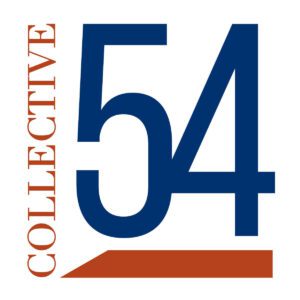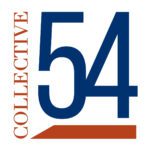Founders of boutiques often mistakenly equate the number of employees with success. However, lots of employees signal a poorly run firm. Collective 54 founder Greg Alexander makes the case for lean staffing and illustrates the impact to profitability.
TRANSCRIPT
Sean Magennis [00:00:15] Welcome to The Boutique with Capital 54, a podcast for owners of professional services firms. My goal with this show is to help you grow scale and sell your firm at the right time for the right price and on the right terms. I’m Sean Magennis, CEO of Capital 54 and your host. On this episode, I will make the case that fewer employees are better than many employees. Founders of boutiques often mistakenly equate number of employees with success when in fact lots of employees signals a poorly run firm. I’ll try to prove this theory by interviewing Greg Alexander, Capital 54’s chief investment officer. Greg’s firm, SBI, at the time of exit averaged one million dollars in revenue per employee. This was driven by having fewer employees than most, this resulted in exceptional profitability and wealth creation for the owners. Greg, I’m looking forward to this. Good to see you and welcome.
Greg Alexander [00:01:33] It’s good to be with you. What a great topic we have today.
Sean Magennis [00:01:37] So, Greg, I often encounter boutique owners with bloated staffs and below average margins. Why is this happening?
Greg Alexander [00:01:46] Somewhere along the way, it became cool to say, quote, Hi, my name is so-and-so. The name of my company is X, Y, Z, and we are a 200 person firm in the blah blah, blah, blah space. Founders brag about lots of people to establish credibility, and maybe this works on the uneducated, but when I hear this, I think, oh no, this poor schmuck is working his tail off and not making any money.
Sean Magennis [00:02:14] So, Greg, what advice would you give a listener who is making this mistake?
Greg Alexander [00:02:18] Geez, where do I begin? I think the first thing I should do is explain that labor is the biggest expense in a professional services firm, often 80 percent of the total expense line. Therefore, anything you can do to reduce labor expenses, do it because this will equate to more profits. I mean, the best boutique in the world would have no employees and lots of clients and revenue.
Sean Magennis [00:02:43] Yeah, exactly. And let’s assume this poor schmuck, as you affectionately referred to earlier, was actually willing to listen. What steps would you have him or her take?
Greg Alexander [00:02:55] I would ask Mr. Schmuck three questions. Question number one, how many people do you need and why? The question number two, what type of people do you need and why? And question number three, which organizational structure would work for you and why?
Sean Magennis [00:03:13] And Greg, how would he know the answers to these questions?
Greg Alexander [00:03:17] Well, he would know the answers to these three questions if he understood three things. First, he would understand the skill level needed to perform the work skill level could be simply junior, mid-level or senior as an example. Second, he would understand the knowledge required to perform the work knowledge level could be simply industry knowledge or knowledge of the problem or knowledge of the solution. And third, he would know how long it would take to perform the work. This is measured in hours and rolled up into a level of effort budget.
Sean Magennis [00:03:57] Got it. And when he had the answers to these questions, what would he do with them?
Greg Alexander [00:04:02] Well, this would tell him how many people he needed and what type. And this is the most important part. He would have the data he needs to engineer a profitable organizational model.
Sean Magennis [00:04:15] How so Greg?
Greg Alexander [00:04:17] So after he knows what it really takes to perform the work, I mean, down at the task level, he will notice he is destroying profits. My friend, poor Mr. Schmuck will see almost every time he can do the work with less people, with more junior people and at less cost.
Sean Magennis [00:04:36] And how does he see that ?
Greg Alexander [00:04:39] Listen, we’re living in a different time today. The service delivery has forever been altered in three very distinctive ways. First, services can be automated with technology. For example, look at what is happening with robo advisors in the wealth management space. Portfolio managers are being replaced by algorithms by the thousands. Second work can be offshored. The big market leading firms offshore approximately 40 percent of their work, yet boutiques offshore about five percent. This is a missed profit opportunity. And third, the gig economy is here in the professional services space. And for real, you can now rent a Harvard MBA X McKinsey type from the to marketplace for less than one hundred bucks an hour. You can get excellent graphic design work from one of collected fifty four members, Russ Perry at Design Pickle for as little as five hundred dollars per month flat fee. These are just a few examples. If Mr. Schmuck picked his head up, he would see there a profit improvement opportunities all around him. Adding headcount is a lazy man’s way of scaling. The days of proving your success with large staffs have been replaced by today’s standard, which is profit. Standard of proof now is profit, not number of employees. There’s nothing cooler than fat profits. I encourage all of our listeners to intelligently design the org structure. Do not just throw heads at every problem.
Sean Magennis [00:06:20] That’s excellent advice, Greg, and great examples. Thank you. And now a word from our sponsor, Collective 54, Collective 54 is a membership organization for owners of professional services firms. Members joined to work with their industry peers to grow scale and someday sell their firms at the right time for the right price and on the right terms. Let us meet one of the collective 54 members.
Don Goldstein [00:06:54] Hello, my name is Don Goldstein. I am president and part owner of 5Q. 5Q primarily serves commercial real estate companies across the United States. Our clients turn to us for help with maximizing technology, efficiency, security and compliance. We provide worry free I.T. with our full spectrum of technology solutions through four service lines I.T. and cyber leadership, I.T., managed services, cyber security, managed services and I.T. project management. If you need assistance in any or all of these areas, reach out to me at [email protected].
Sean Magennis [00:07:34] If you are trying to grow scale or sell your firm and feel you would benefit from being a part of a community of peers, visit Collective54.com. OK, this takes us to the end of the episode, let us try to help listeners apply this. We end each show with a tool. We do so because this allows a listener to apply the lessons to his or her firm. Our preferred tool is a checklist and our style of checklist is a yes-no questionnaire. We aim to keep it simple by asking only 10 questions in this instance, if you answer yes to eight or more of these questions, your employee count is working for you. If you answer no, too many times, you are likely unsure of how many employees you need, which is getting in the way of your attempts to scale a profitable firm. Let’s begin.
Sean Magennis [00:08:41] Number one, can you decouple the rate of revenue growth from the rate of headcount growth?
Greg Alexander [00:08:47] Yeah, I mean, this is so important. You grow in revenue, 30 percent headcount of 30 percent. You’re running in place if you’re growing revenue, 30 percent in headcount growth to, let’s say, 10 percent, you’re expanding your margins.
Sean Magennis [00:08:58] Yes. Number two, are most of your problems, people related?
Greg Alexander [00:09:03] They say all your problems walking around on two feet. So fewer people, fewer problems.
Sean Magennis [00:09:08] Number three, is your payroll your biggest expense?
Greg Alexander [00:09:12] Obvious question.
Sean Magennis [00:09:13] Number four, can technology perform work that humans are doing today? Number five, are you offshoring less than 40 percent of your work?
Greg Alexander [00:09:25] Yeah, there’s still some fear there and our listeners need to get over this. I mean, this is well-worn territory at this point.
Sean Magennis [00:09:32] And the quality of offshoring is spectacular.
Greg Alexander [00:09:35] Sure.
Sean Magennis [00:09:36] Number six, can you flex up or flex down headcount to match demand in close to real time?
Greg Alexander [00:09:44] This is what’s great about these talent marketplaces like CATALIN.
Sean Magennis [00:09:49] Number seven, are you skilled at labor arbitrage? Number eight, is it clear that scale does not refer to the number of employees, but to the amount of cash flow? Number nine, is it hard to match revenue and expenses?
Greg Alexander [00:10:09] In a project based firm, it’s brutally difficult.
Sean Magennis [00:10:13] Number ten, do you have limited forward visibility in your business?
Greg Alexander [00:10:18] Yeah, and again, most of the listeners here run some version of a product project based firm. So forward visibility is a problem. That’s why these flexible labor models are so critical.
Sean Magennis [00:10:29] And really keeping all of those relationships warm.
Greg Alexander [00:10:31] Yes.
Sean Magennis [00:10:32] So, in summary, the best boutique would have no employees. Labor is your biggest cost. Organize to reduce employee related expenses. This will drive your profits up. If you enjoyed the show and want to learn more, pick up a copy of Greg Alexander’s book titled The Boutique How to Start Scale and Sell Professional Services Firm. I’m Sean Magennis. Thank you for listening.


